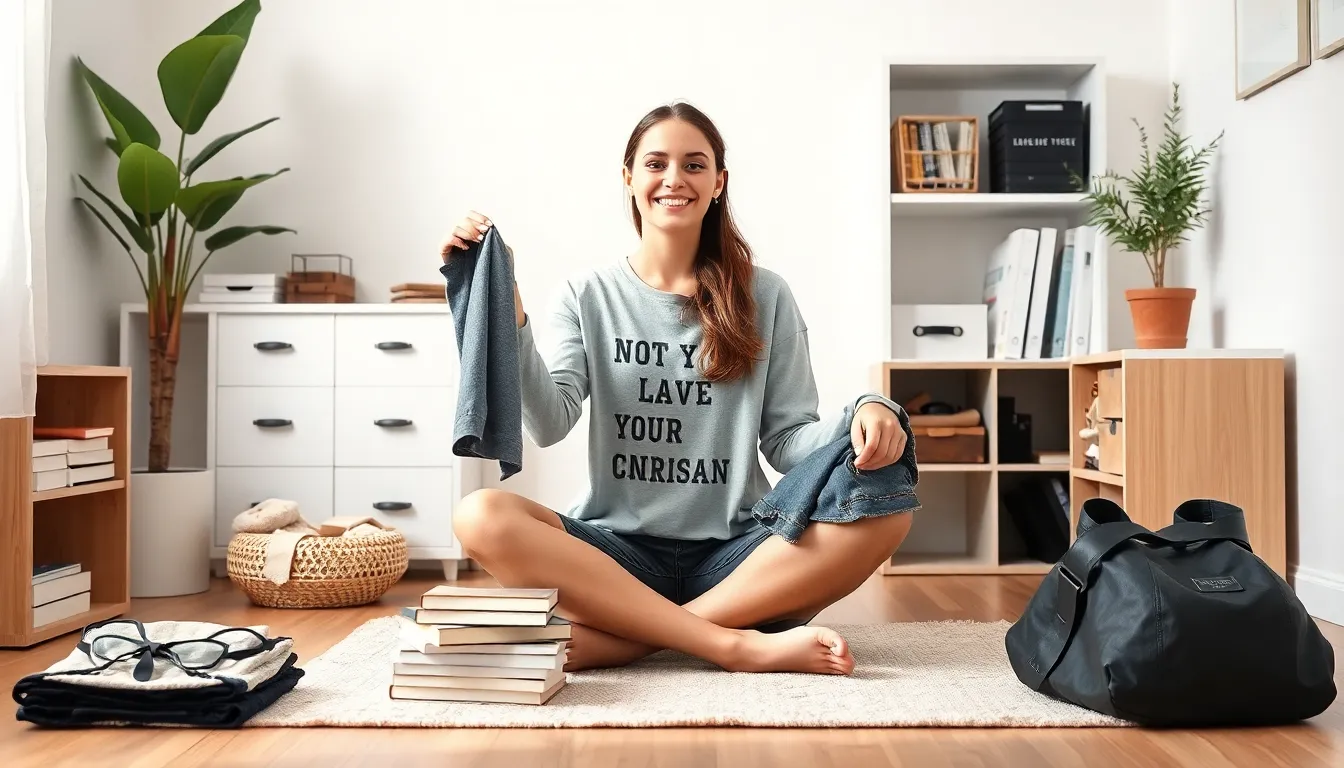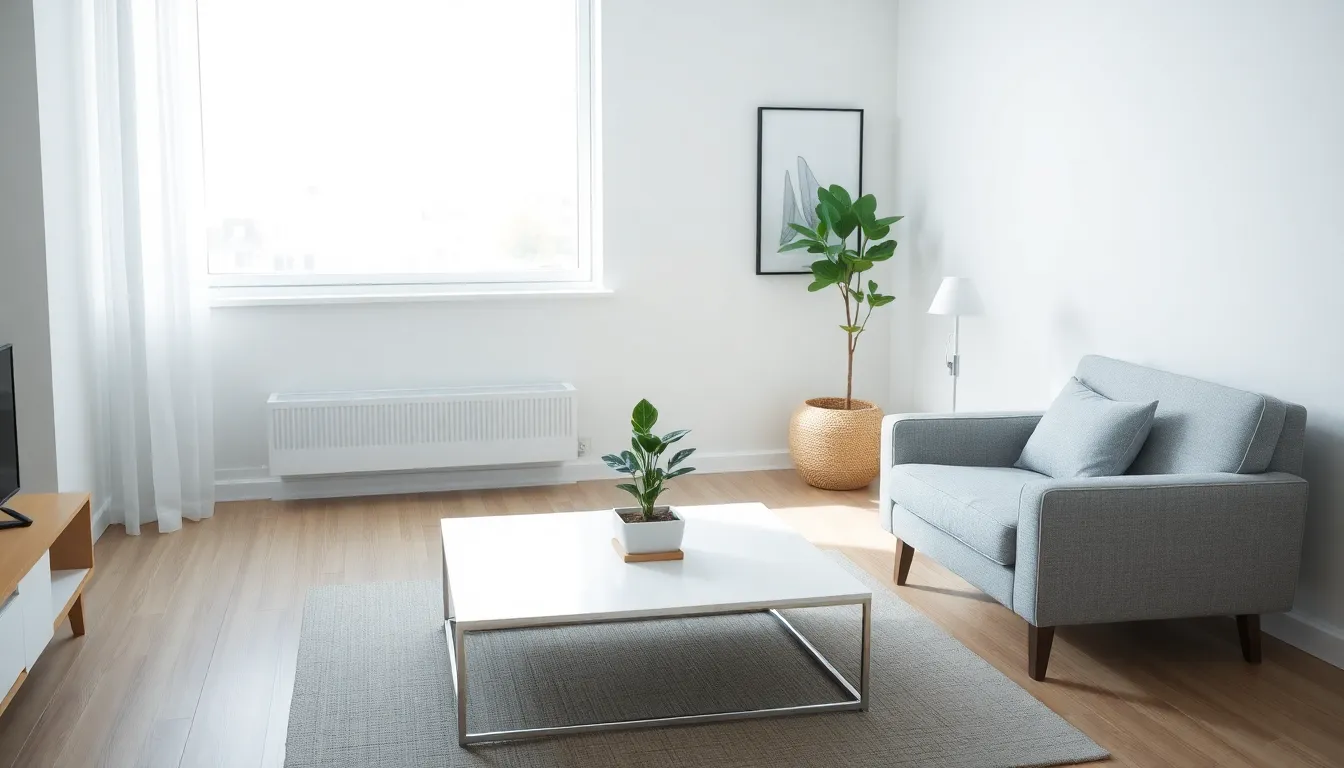In a world overflowing with stuff, embracing a minimalist lifestyle might just be the breath of fresh air everyone needs. Imagine trading cluttered countertops for open spaces and a chaotic schedule for a life that feels light as a feather. It’s time to ditch the excess and discover the freedom that comes with simplicity.
Understanding Minimalism
Minimalism focuses on simplicity and intentional living. By reducing excess, individuals create a space for what truly matters.
Definition of Minimalism
Minimalism emphasizes the value of living with less. It encourages people to prioritize experiences over possessions. A minimalist lifestyle involves decluttering both physical and mental spaces. Efforts include eliminating distractions and unnecessary commitments. Ultimately, this lifestyle promotes clarity and purpose.
Benefits of a Minimalist Lifestyle
Adopting minimalism offers various advantages. Firstly, individuals often experience reduced stress and anxiety. Secondly, more time becomes available for hobbies and relationships. Thirdly, financial savings often result from buying fewer items. Living minimally can also lead to a meaningful connection with one’s surroundings. Overall, individuals find deeper satisfaction in everyday moments when embracing a minimalist approach.
Minimalist Lifestyle Tips


Adopting minimalist lifestyle tips encourages simplicity and intentional living, making life less cluttered and more meaningful. The following methods help individuals embrace minimalism effectively.
Decluttering Your Space
Start by identifying spaces that feel overwhelming. Items lying around can create a sense of chaos. Focus on one area at a time, such as a room or even a drawer. Sorting belongings into categories, like keep, donate, or discard, simplifies the process. Aiming for less than ten items in exposed spaces can enhance clarity and open up environments. Maintain a regular decluttering routine by setting aside time weekly to evaluate possessions.
Simplifying Your Wardrobe
Fewer clothes often lead to greater choice. Consider the “capsule wardrobe” concept, which involves maintaining around 30 to 40 versatile pieces. Choosing neutral colors and classic styles allows for easier mixing and matching. Donate clothes that haven’t been worn in the past year. Limit impulse purchases by asking if an item adds true value to the wardrobe. Keep only those pieces that spark joy or offer substantial utility.
Reducing Digital Clutter
Digital clutter can impede productivity and increase stress. Start by organizing files into clear folders and removing duplicates. Unsubscribe from unnecessary emails to minimize inbox overload. Regularly review bookmarks and apps, eliminating those that no longer serve a purpose. Set aside time monthly to delete irrelevant files and streamline digital spaces. Prioritizing important tasks over distractions improves focus and efficiency, fostering a clearer mindset.
Making Minimalism a Habit
Cultivating minimalism involves consistent practice and intentional actions. Establishing habits makes simplicity a part of daily life.
Setting Goals for Minimalism
Establish specific targets to simplify life. Defining goals helps prioritize areas for decluttering and minimal living. Individuals might aim to reduce belongings by 50% within six months. Focus can shift to time management, limiting screen time, or choosing quality over quantity in purchases. Setting achievable benchmarks fosters motivation and clarity.
Creating a Mindful Routine
Incorporate mindfulness into daily habits. Start mornings with meditation or journaling to cultivate awareness. Evaluating daily tasks aids in recognizing essential activities, fostering efficient time allocation. Limit distractions by designating tech-free hours. This practice enhances focus and promotes a calming environment. Regular reflections on progress maintain commitment and accountability.
Challenges of Embracing Minimalism
Transitioning to a minimalist lifestyle presents unique challenges. Individuals often encounter emotional attachments to belongings, making it difficult to part with items.
Overcoming Emotional Attachments
A strong connection exists between personal history and items in possession. For many, sentimental value makes letting go challenging. Recognizing this attachment is crucial for progress. It helps to evaluate whether an item truly adds value to life. Journaling thoughts or memories associated with objects can clarify feelings and assist in making informed decisions. Experiences often hold more significance than physical items, leading to healthier choices. Another strategy involves setting aside items temporarily to assess feelings over time, aiding in detachment.
Staying Committed to the Lifestyle
Sustaining a minimalist lifestyle requires dedication and perseverance. Setting clear, achievable goals provides direction and motivation. Progress can be measured through timelines, such as reducing possessions by a certain percentage. Regular reflections on motivations for minimalism support commitment to a simpler life. Developing routines that prioritize minimalism strengthens adherence. Engaging with communities or online forums can foster accountability and encouragement. Sharing experiences with others also reinforces the commitment to living intentionally and valuing simplicity.